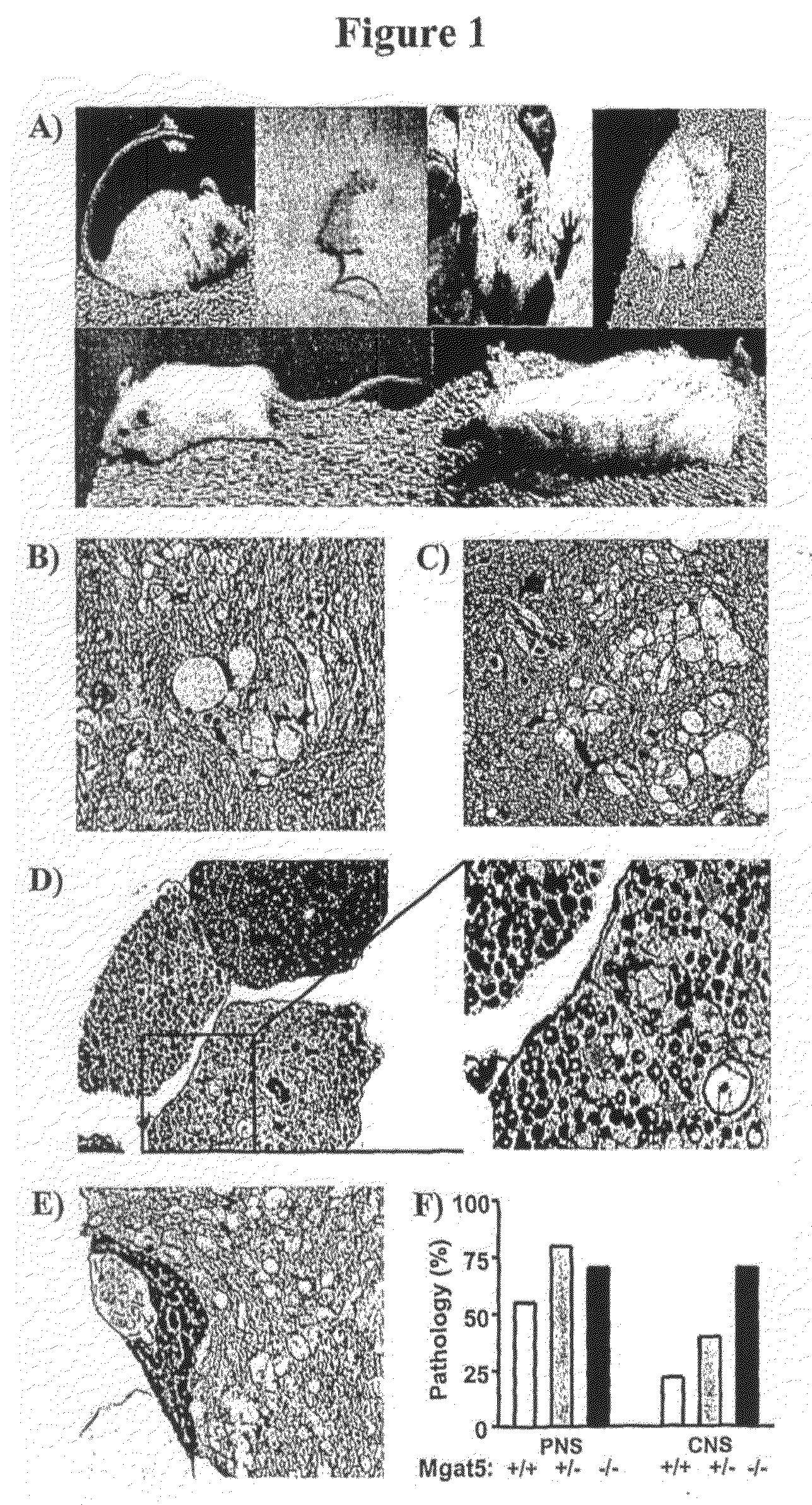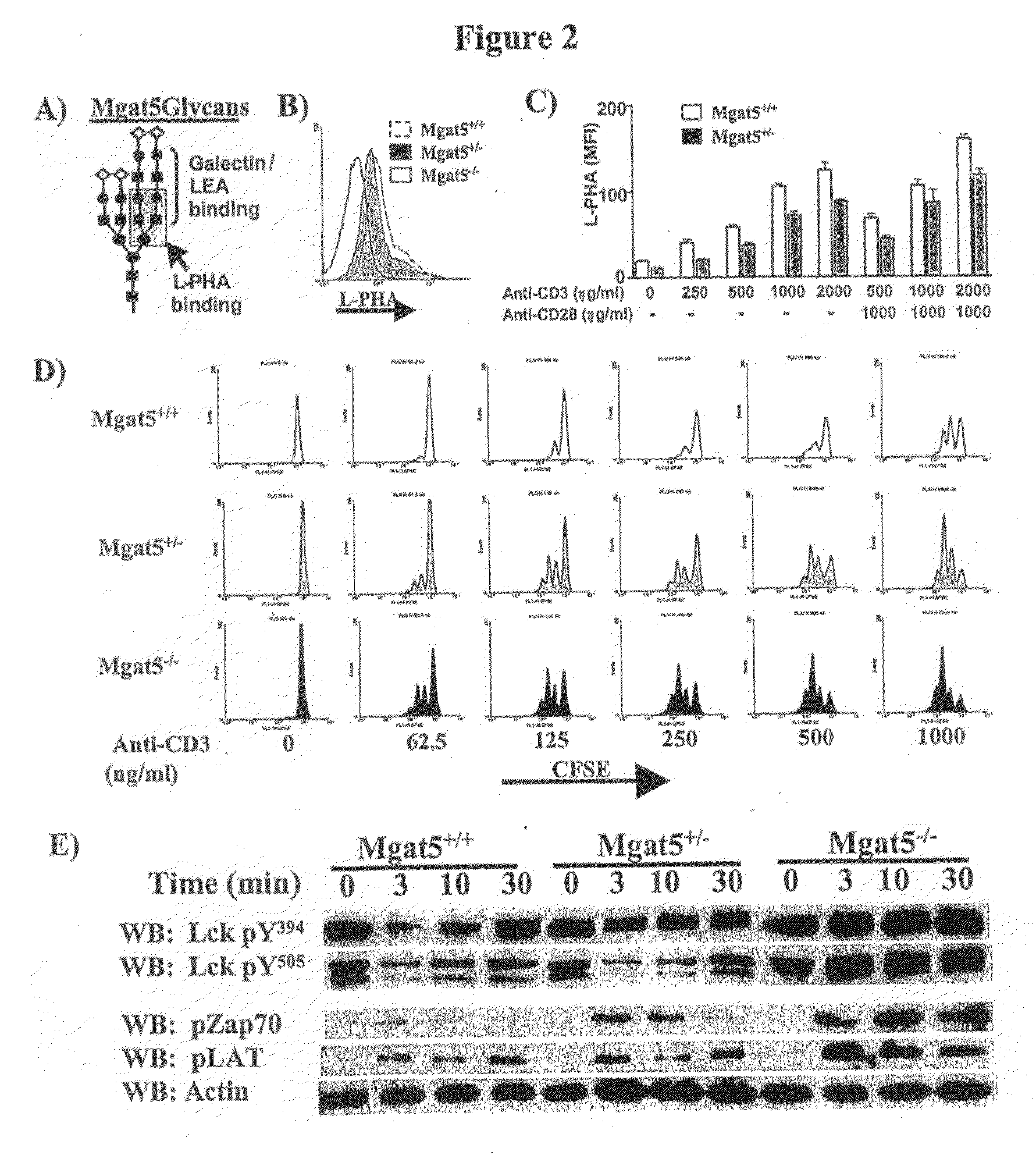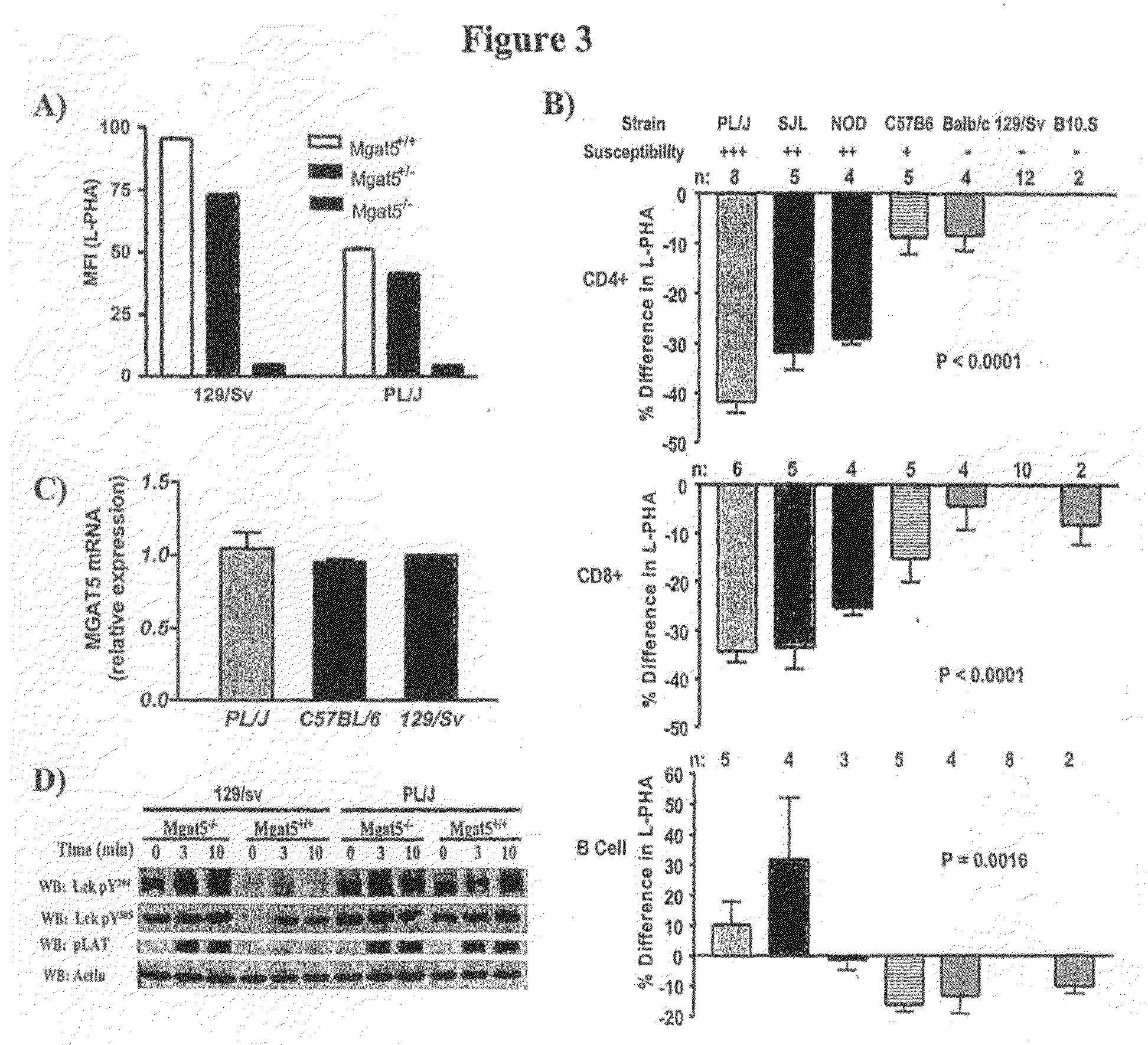Methods and compositions for preventing and treating a disease related to glycan dysregulation
a technology of glycan dysregulation and composition, applied in the direction of drug composition, immunological disorders, instruments, etc., to achieve the effect of inhibiting disease and increasing the supply of udp-glcna
- Summary
- Abstract
- Description
- Claims
- Application Information
AI Technical Summary
Benefits of technology
Problems solved by technology
Method used
Image
Examples
example 1
Summary
[0321]Genetic and metabolic control of fractional differences in β1,6GlcNAc branched N-glycans provide a continuum of TCR sensitivity and susceptibility to spontaneous and induced demyelinating disease. The encephalomyelitis (EAE) susceptible strains PL / J, SJL and NOD mice have reduced Mgat5 N-glycan expression in T-cells compared to EAE resistant 129 / Sv, Balb / cj and B10.S strains. Wild type PL / J mice displaying the lowest levels develop late onset spontaneous inflammatory demyelinating disease, which is enhanced by Mgat5+ / − and Mgat5− / − backgrounds in a gene-dose dependent manner. Clinical disease was slowly progressive, displaying paralysis, tremor and focal dystonic posturing in association with axonal damage in demyelinated lesions and normal white matter; phenotypes characteristic of the progressive phase of MS (1, 2). Gene targeted reduction in Mgat5 N-glycan expression linearly enhanced TCR sensitivity while increasing Mgat5 N-glycan levels by utilizing biosynthetic pr...
example 2
Summary
[0332]The T cell mediated autoimmune demyelinating disease Multiple Sclerosis (MS) is a complex trait disorder, where environmental factors influence the penetrance of mutations and complicate identification of susceptibility genes1. Genetic and metabolic regulation of Mgat5 modified N-glycan expression in mice sets thresholds for T cell activation, TH1 differentiation and spontaneous demyelinating disease by controlling clustering of T cell receptor (TCR) at the immune synapse (4, 5) (Example 1). Here it is demonstrated that MS is associated with multiple genetic deficiencies in the N-glycan pathway that reduce Mgat5 glycan expression in T cells. Approximately 14 / 23 genes in the N-glycan and hexosamine pathways required for Mgat5 glycan expression non-randomly map to 18 MS and other autoimmune loci. MALDI-TOF mass spectroscopy of peripheral blood mononuclear cells (PBMC) from MS patients demonstrated high frequency blockade of N-glycan processing at three sequential steps. M...
example 3
[0346]The following methods were used in the study described in this Example.
Methods
[0347]Spontaneous demyelinating disease and dystonia. PL / J mice at two facilities were assessed for clinical disease using a standard EAE scale (Tables 1, 3) (4). The first cohort was at backcross 4 from 129 / Sv (Table 1) and was housed at the Samuel Lunenfeld Research Institute (SLRI) vivarium, a colony infected with mouse hepatitis virus, EDIM, Minute virus, Mouse parvovirus, GDVII, pinworm and fur mites. These mice were initially assessed by blindly examining all Mgat5− / − (n=43), Mgat5+ / − (n=22) and Mgat+ / + (n=15) PL / J mice in the colony over 6 months of age. Only mice over 1 year of age were found to have weakness and this smaller cohort (n=21, 13 and 10, respectively) was scored for clinical severity every 1-2 weeks over the next ˜4 months. Weakness was slowly progressive without recovery in all affected mice, an observation confirmed by daily assessment of a smaller cohort (n=12) of clinically a...
PUM
| Property | Measurement | Unit |
|---|---|---|
| Ka | aaaaa | aaaaa |
| temperature | aaaaa | aaaaa |
| temperature | aaaaa | aaaaa |
Abstract
Description
Claims
Application Information
 Login to View More
Login to View More - R&D
- Intellectual Property
- Life Sciences
- Materials
- Tech Scout
- Unparalleled Data Quality
- Higher Quality Content
- 60% Fewer Hallucinations
Browse by: Latest US Patents, China's latest patents, Technical Efficacy Thesaurus, Application Domain, Technology Topic, Popular Technical Reports.
© 2025 PatSnap. All rights reserved.Legal|Privacy policy|Modern Slavery Act Transparency Statement|Sitemap|About US| Contact US: help@patsnap.com



